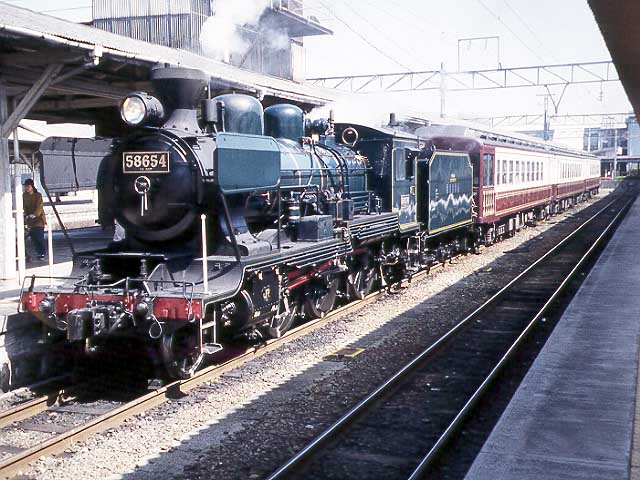

However, in addition, the mainstream engineering staff including Kiich ASAKURA and Hideo SHIMA, who played leading roles in designing motor vehicles from the 1920s to the1930s, were extremely afraid of taking risks on a fundamental technical level and stuck fast to German technology, in particular to a rather old-fashioned Prussian approach of driving slow, large-diameter drive wheels. This was not a surprising matter, considering that Japan had a weak basic industrial power at that time. The introduction of technological innovation was almost stopped in the field of steam locomotives after the Taisho period, when it was assumed that the goal of 'domestic production' was achieved.

Nonetheless, the development of Japan's steam locomotive technology was consistently far behind European and American levels at that time, even considering the handicaps of narrow-gage railroads (a big obstacle to the upgrading of trains due not only to the narrow gage, but also weak tracks, which severely limited the axle load). Gaps in Technology and Stagnation of Development Refer to the domestically-produced JNR steam locomotives. Their long-term contributions until the abolition in 1976 cannot be overestimated. These steam locomotives, with some exceptions, generally had high reliability and durability for practical use so that they worked extensively all through the prewar and postwar glory days for railroads. As a result, epoch-making and large-scale locomotives such as JNR C51 and JNR D50 steam locomotives were mass-produced, and steam locomotives for many purposes appeared in succession by 1948 after World War II. In the early Taisho period, the successful production of JNR 9600 and JNR 8620 steam locomotives, the first mass-produced domestic steam locomotives, led to domestic production of all steam locomotives for domestic use.Īlong with the increased traffic volume due to the Post-World War I economic boom, the Ministry of Railways promoted the further upgrading and standardization of steam locomotives. Particularly the 9600-type was used for the longest time of all other subsequent types of steam locomotives and existed long enough to see the end of Japan-made steam locomotives. Many of these two types of locomotives were produced in domestic private factories and we can say that a domestic production system for steam locomotives was almost established at this point. Successful examples in this early time were JNR 9600 freight steam locomotives (nicknamed, "Kyuroku") and JNR 8620 steam locomotives for passenger cars (nicknamed, "Hachiroku"). Moreover, it wasn't until all imports were stopped, because of World War I, that they could successfully make special steel parts such as axles.Īt last, with the coming of the Taisho period, trunk-line steam locomotives of a Japanese-original design began to appear. They made it possible to produce copied goods during the middle of the Meiji period, but it was not until the end of the Meiji when they gained confidence in basic technology. The government gave orders for copied products of imported locomotives to each private company so that they could develop their technology, sent engineering officials abroad for study, and strengthened its academic and technological foundation. In order to encourage not only government, but also private enterprise to promote the railroad industry, the government worked actively to establish a train manufacturing company in Osaka and Nippon Sharyo in Nagoya. To establish home-grown railroad technology was urgent business for the Meiji government. In time the governmental railroad company (Japanese National Railways or JNR) built British style railroads, importing many vehicles from the United Kingdom, the governmental Horonai Railway in Hokkaido introduced American style facilities and trains such as JNR 7100 steam locomotives (nicknamed Benkei, Shizuka, etc.), while the Kyushu Railway Company adopted the German style. This was a matter of course because the newly-established Meiji government had no technology to produce them. When Japanese railroad service started in 1872, all the locomotives, for example Japanese National Railways (JNR) 150 steam locomotives, were introduced from foreign countries. We would like to describe the history of steam locomotives in Japan.

History of Steam Locomotives of Japan ( 日本の蒸気機関車史)


 0 kommentar(er)
0 kommentar(er)
